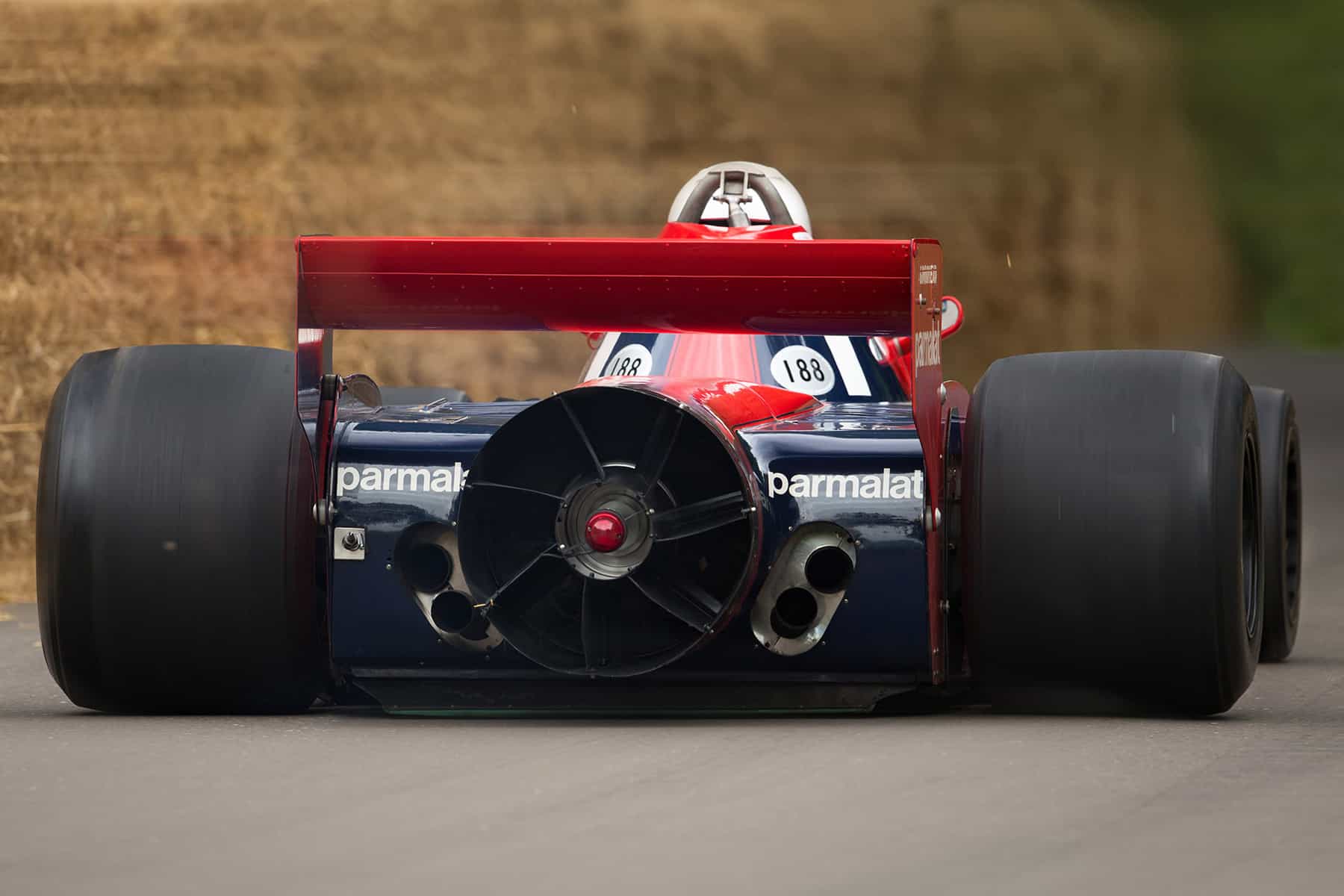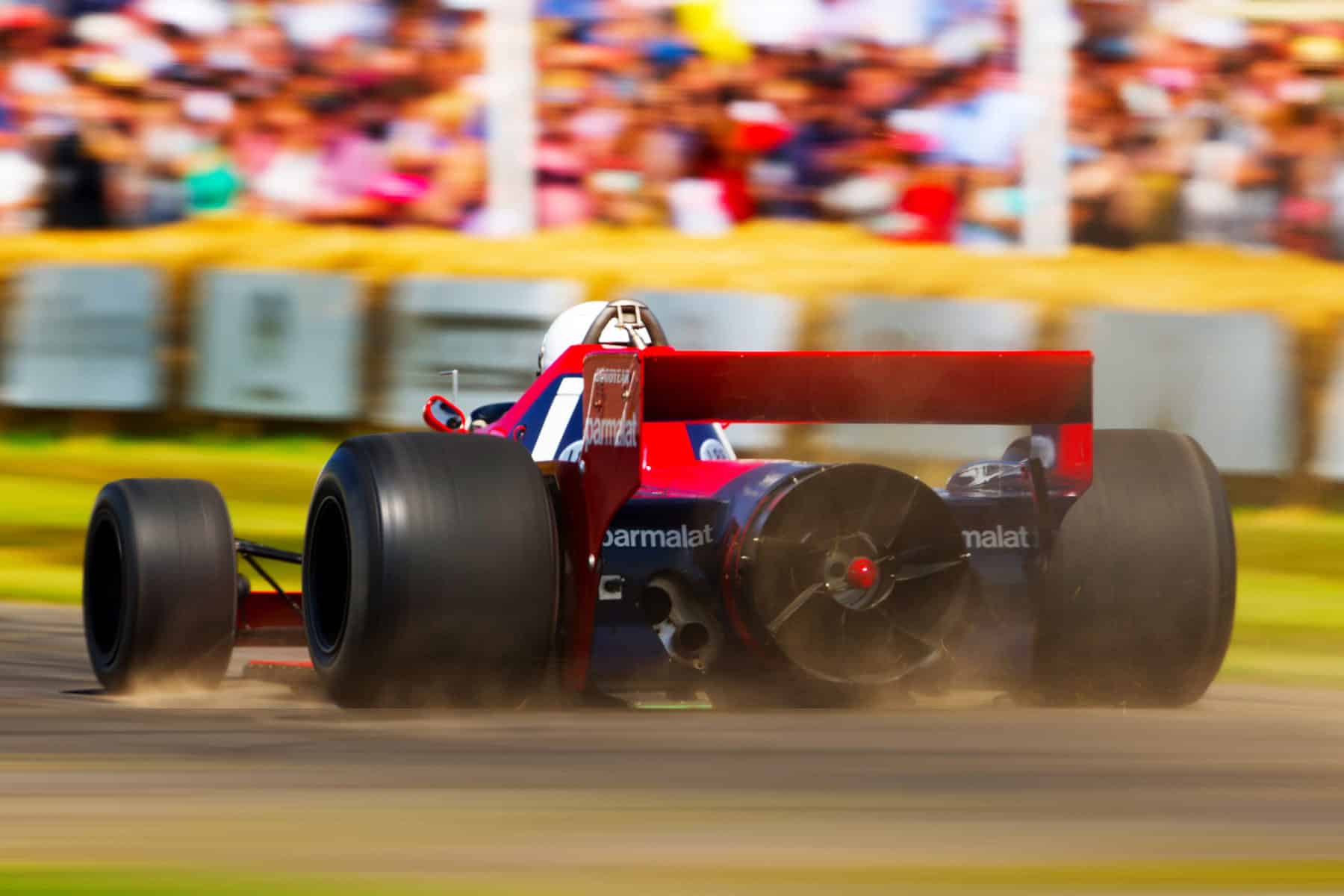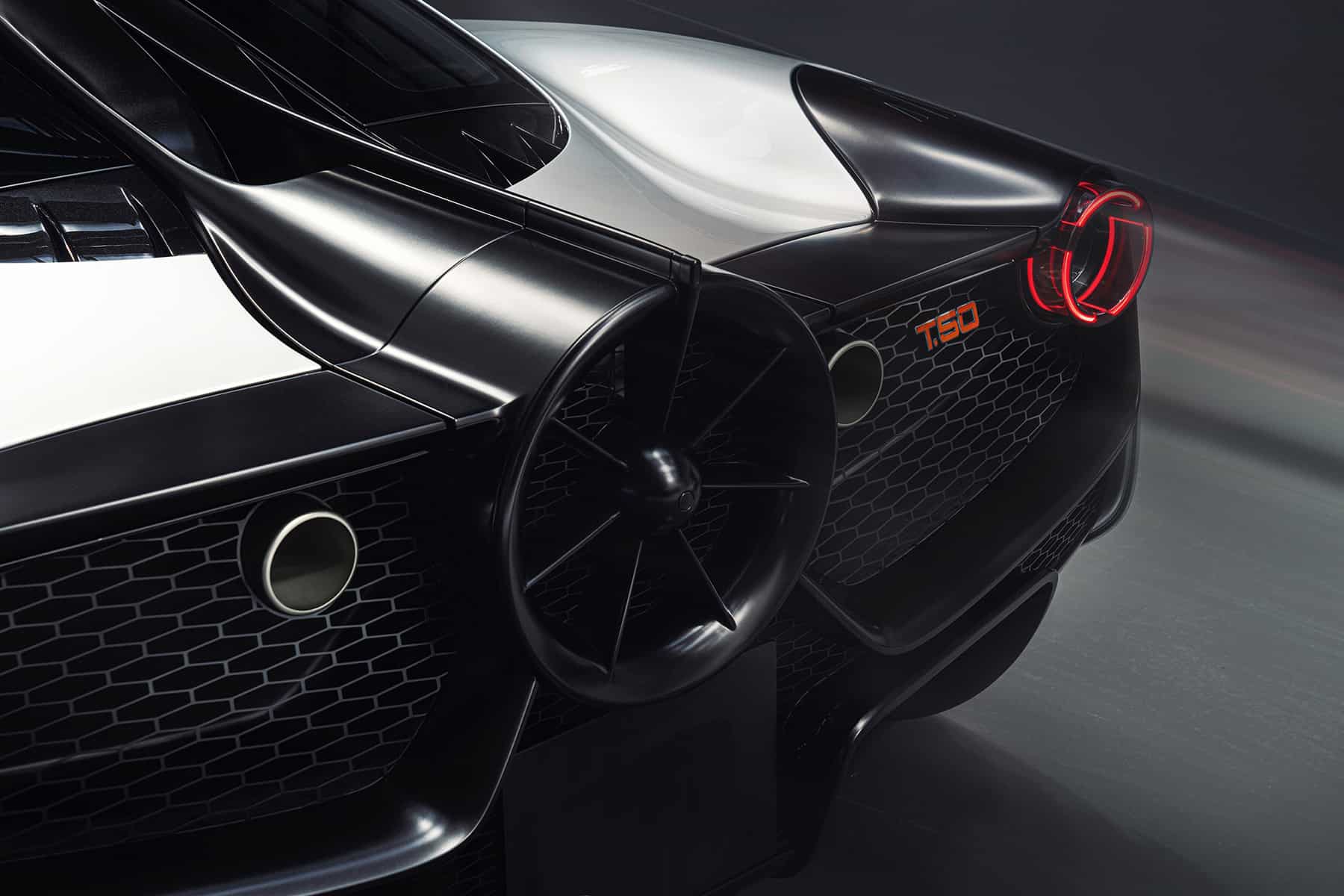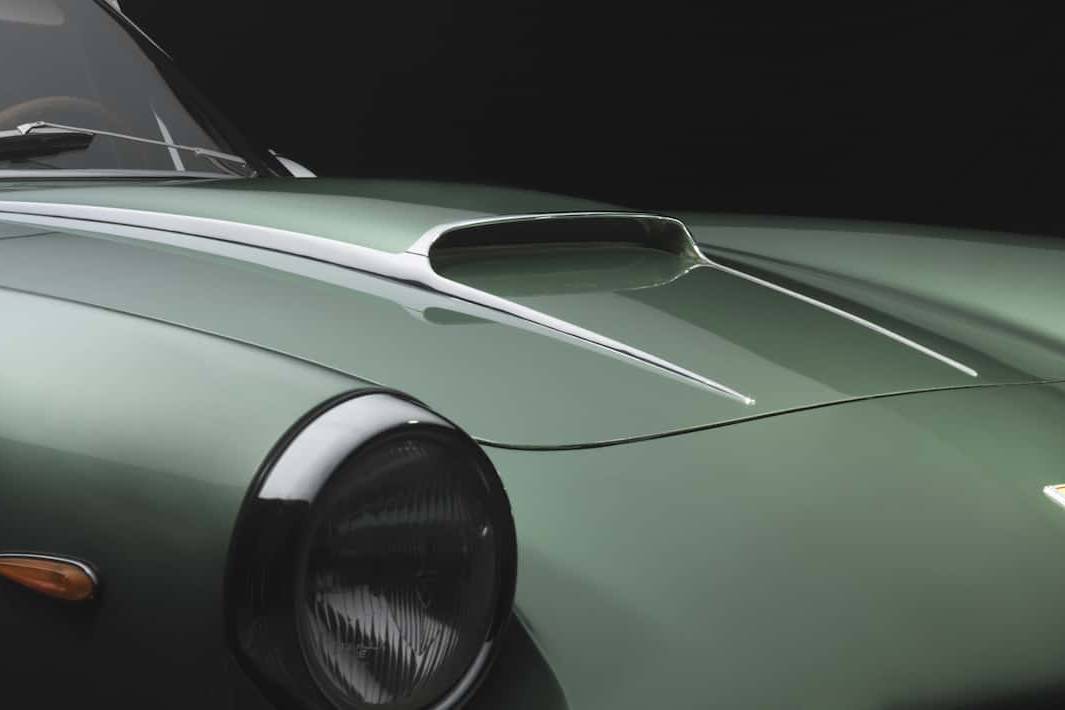The Gordon Murray Automotive T.50
Another game-changer from the professor?
BY: WOUTER MELISSEN
In early August, Professor Gordon Murray revealed his fiftieth car design to the world. Appropriately dubbed the Gordon Murray Automotive T.50, it embodies all the lessons he learned creating road and racing cars during the last fifty years.
As a road-legal supercar, it can naturally be considered the spiritual replacement to the legendary McLaren F1. The T.50, however, also incorporates some features found on the racing cars the South African has designed. Perhaps the most visible of these is the big fan on the tail of the car, which harkens back to the Brabham BT46B Formula 1 car of 1978.
Introduced at the Swedish Grand Prix, the BT46B actually was the third version of the BT46 developed by Brabham. These were the result of Murray struggling to compensate for the bulk of the flat-12 Alfa Romeo engine the Bernie Ecclestone-owned team had to committed to from the start of the 1976 season. The 12-cylinder unit was similar in design to the successful Ferrari engines, but undoubtedly more important to Ecclestone was that he had secured the supply free of charge. The choice of engine also pleased the team’s Italian backers Martini and later Parmalat. While it proved very powerful, it was also less reliable, heavier, and less fuel-efficient than the Ford Cosworth DFV used by most rivals.
With the original BT46, Murray tried to compensate for the excessive weight of the Alfa Romeo engine. Instead of using conventional water and oil radiators, the body of the BT46 was covered with flat panel heat exchangers. An added benefit of this solution was increased aerodynamic efficiency, as there no longer was a need to disturb the airflow with radiators. As it turned out, the surface area available for the heat exchangers was insufficient to cool the car properly. During testing the car suffered from massive overheating issues. The concept was abandoned and the BT46 made a belated debut in round three of the World Championship with conventional radiators mounted in the nose.
John Watson finished third at the BT46’s debut at Murray’s home Grand Prix. The winner of the race was Ronnie Peterson, who drove the revolutionary Lotus 79 Cosworth. It was a carefully guarded secret at the time but the Type 79 and the Type 78 before it used wing-shaped tunnels under the car to generate “ground effect” aerodynamics. By raising the floor in the tunnels and giving it the shape of the top surface of an airplane’s wing, a negative pressure was created. The car was effectively sucked to the ground without the need for drag-inducing wings. Lotus had introduced ground effect in 1977 but it really started to make a difference when Lexan skirts were added in 1978 to better seal off the area underneath the car.
Murray was one of the first to fully understand what Lotus was doing, but he could not respond instantly due to the flat layout of the Alfa Romeo engine. Originally, this had been one of the great attributes of the engine, as it resulted in a lower center of gravity, but now it prevented the ground effect tunnels to run on either side of the engine. This prompted Murray to look at a different approach to create a low-pressure area underneath the car. He needed to look no further than the 1970 Chaparral 2J Can-Am car. This used a snowmobile-engine driven fan to suck the air from underneath the car. The very fast 2J was eventually outlawed, as it fell victim to the ban on moveable aerodynamic devices.
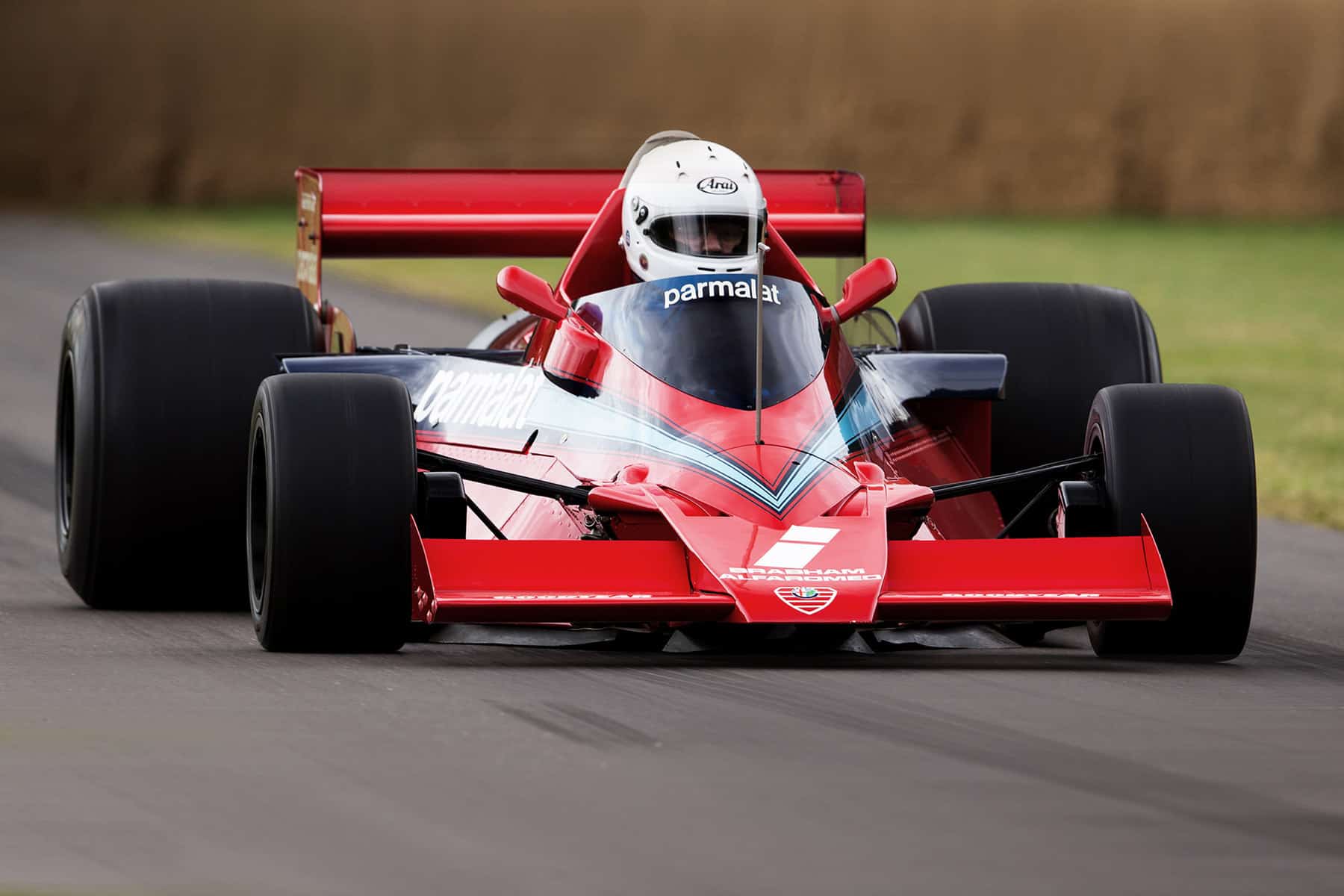
Also still looking for a different approach for the BT46 cooling architecture, Murray, along with consultant engineer David Cox, came to a solution that solved both problems. A system was devised that incorporated a tail-mounted fan that would suck air from underneath the car just as on the Chapparal. Crucially, the fan drew air through the radiators that were now mounted on top of the engine. The fact that the fan was primarily used for cooling is what made it legal. Gordon Murray explained this in his book, One Formula, 50 Years of Design.
“I read the regulations again and Article 3.7 on aerodynamic devices said, ‘Anything that’s primary function is to have an aerodynamic influence on the car must always remain stationary and be fixed relative to the sprung mass of the car.’ I spoke to a lawyer friend, and said, ‘What does primary function mean?’ and he said, ‘Well, how many functions are there?’ I said, ‘Two.’ So he said, ‘The primary function is the one that has more than half the influence.’”
The main weakness of the Chaparral 2J was the reliability of the auxiliary engine. As soon as it failed – and it did so regularly – the car was effectively undriveable. In the Brabham design, the fan was simply driven off the engine, which meant that the higher the engine revved, the greater suction effect. The car was also fitted with skirts to seal off the area underneath the car. This proved to be the most delicate part of the design as using skirts that were too long made these prone to damage, while running skirts that were too short saw them simply sucked to the underside of the car. Regardless of the length, damage incurred during driving remained a very dangerous problem. The sudden loss of low pressure had dramatic effects on the cornering speeds.
As he describes in his book, Murray found a creative solution: “So, David [Cox] went down to a scrapyard and got an altimeter out of an old airplane. We had a pitot tube on the front, which you can see in all the photographs, which measured the static pressure. All an altimeter does to read the altitude is measure static pressure and local pressure, and it uses the pressure differential to calculate the height. So that’s what we did. We had this altimeter tie-wrapped in the cockpit, right in front of the driver, with a green zone and a red zone. We said, ‘Forget the numbers; that’s nothing to do with it. If you’re coming into a corner, the needle has to be in the green zone. If it’s in the red zone, you’ve lost suction. Slow down.'”
Even though it was the third version of the BT46, the Brabham “fan car” was dubbed the BT46B. It was ready in time for the Swedish Grand Prix, the eighth round of the World Championship. Not surprisingly, the new Brabham attracted a lot of attention. With the ban on moveable aerodynamic devices, it was subject of a lot of debate. Murray had explained to the governing body exactly what the primary function of the fan was and during the weekend a scrutineer duly arrived to measure the airflow. He found that Murray was absolutely correct and that, indeed, around 55 percent of the airflow ran through the radiator.
The 45 percent that remained was more than enough to give the BT46B a considerable edge over the rivals. In an attempt not to incense the competition any further, Ecclestone instructed drivers Niki Lauda and John Watson to qualify their BT46Bs with full tanks. Nevertheless, they were third and second respectively. Watson retired from the race but Niki Lauda claimed a convincing debut victory with the Brabham fan car. Its benefits were illustrated best late in the race when an oil spill had made the track surface slippery. Where others had to slow down, Lauda’s Brabham was seemingly unaffected.
Even though the BT46B had been declared legal, ahead of the 1979 season it was announced that the loophole in the regulations that had allowed it would be closed. Ecclestone also already had his eye on the bigger picture and decided not to race the fan car again. At the time it was widely reported that the BT46B had been banned but that was not the case. Brabham did not win a race again with the Alfa Romeo engine, but for Ecclestone, parking the dominant machines turned out to be instrumental for him to become the most powerful man in the sport. Before that happened, Brabham would go on to win two more World Championships with Murray-designed machines that were powered by the Cosworth DFV V8 and BMW turbo “four” respectively.
For the T.50, Murray did not have to look at any rule book and, as a result, the tail-mounted fan’s primary function is indeed to create a low-pressure area on the car. Interestingly, he had already used a similar system in the McLaren F1 but, with the fans hidden away in the wheel well, it was not nearly as obvious. On the T.50, the fan is part of a fully active underbody aerodynamics package. Murray explains: “Through the application of two automatic and four driver-selected aero modes, the T.50 is capable of increasing downforce by 50 percent; reducing drag by 12.5 percent; adding around 50PS to the car’s output in combination with ram-air induction; and cutting braking distance by 10 m from 150 mph.”
Together with the extraordinary low weight of 986 kilograms, the high-revving Cosworth V12 engine, manual six-speed gearbox, and the three-seater layout, the T.50 promises to be another game-changer like so many of Murray’s designs. Like the BT46B, it looks set to be leaps and bounds ahead of its rivals. This time, however, Murray has not been forced to conform to any sporting regulation or take into account the feelings of any of his rivals.
